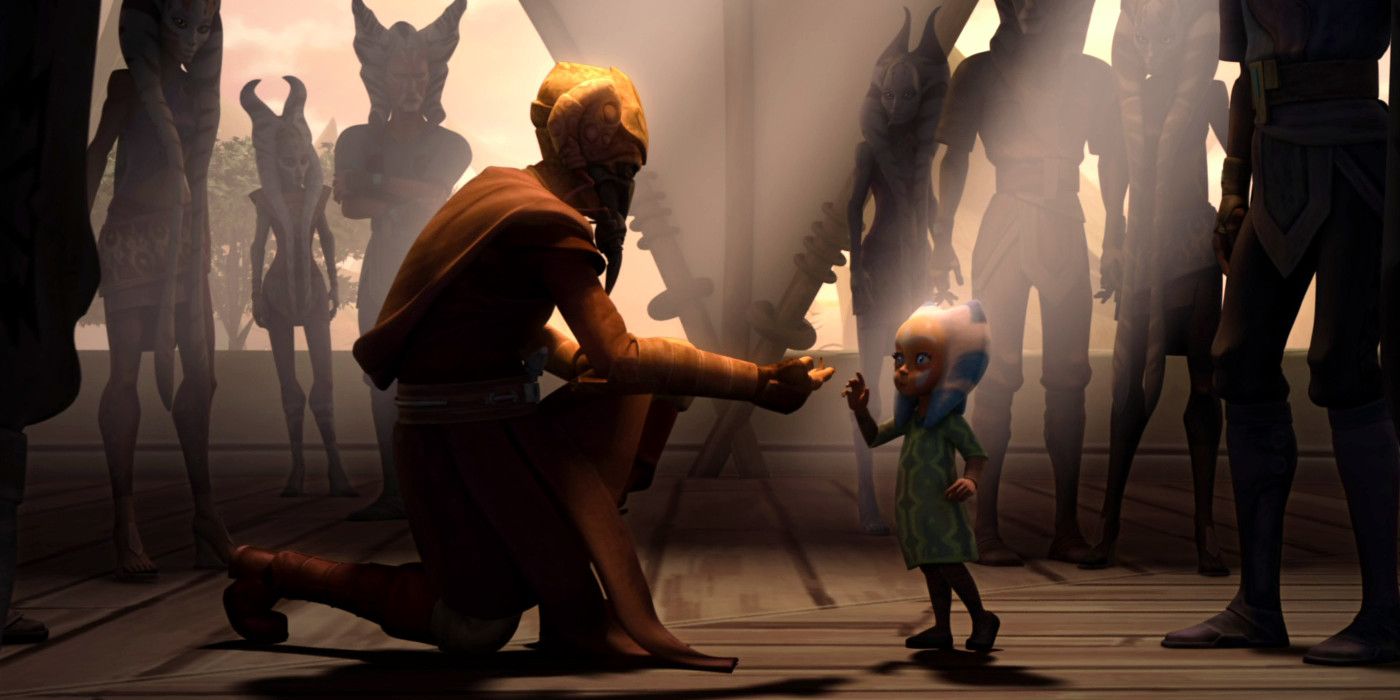
All 6 Jedi Order Ranks Explained
Summary
- The Jedi Order consists of six official ranks, with each rank signifying a different stage of a Jedi’s training and advancement.
- Jedi Initiates are recruited at a young age and are chosen for their potential connection to the Force before forming strong attachments.
- To become a Jedi Knight, Padawans must pass the Jedi Trials, which consist of individual challenges that test their skills and character.
There are six Jedi ranks in Star Wars, and all have made appearances on the big screen. While the Sith pride themselves on competing with one another, Jedi strive to cooperate with those around them. The Jedi Code — which defines a Jedi’s beliefs — has constantly been modified and adapted over time. There’s no doubt characters like Master Yoda helped shape the Jedi Code into what audiences see in the Star Wars prequel trilogy. It is this Code that specifies a Master may take only one apprentice, and it is the Code that forbids romantic relationships.
Given how the Jedi Code changed in each Star Wars era, Rey’s New Jedi Order could easily create new Jedi ranks. In Star Wars Legends, there were different paths a Jedi could take, such as the role of Jedi Consular, Jedi Guardian, or Jedi Sentinel. These classifications still exist in canon, but they are viewed more like professions than ranks. The Star Wars Book from 2020 — featuring contributions from Pablo Hidalgo, Dan Zehr, and Cole Horton — outlines the six official ranks of the Jedi Order, the “Jedi Path” that dictates the single route of advancement in the Order.

Star Wars Movies In Order: How To Watch Release Order, Chronologically & With The TV Shows
What’s the best way to watch Star Wars? Here’s everything you need to know to watch in release or timeline order, and how to include the TV shows.
6 Initiate
A Jedi is brought to the Temple at a young age
The first step for a prospective Jedi is to be sought out and recruited as a Jedi Initiate. Initiates are toddler-aged inductees who show some level of connection to the Force. The Jedi specifically sought out young members to induct, since toddlers and babies had yet to form powerful attachments to their families. This is why Anakin Skywalker was initially denied entry into the Jedi in Star Wars: Episode I – The Phantom Menace. Yoda and Windu felt Anakin had already been tainted by attachment due to his strong connection with his mother.
5 Youngling
A Jedi’s basic training period at the Temple
After officially joining the Jedi Order, Initiates were separated into clans and given the title of Youngling. These clans were reminiscent of the Hogwarts Houses from Harry Potter, where Younglings learned and took classes as a group. Several Youngling clans have been identified in Star Wars: The Clone Wars. Cavan Scott’s audiobook Dooku: Jedi Lost names three clans: the Hawkbat Clan, the Heliost Clan, and the Thranta Clan. When all clan members have reached a certain age, they are taken to the planet Ilum, a vergence in the Force where they acquire kyber crystals for their first lightsabers.
4 Padawan
A Jedi apprentice assigned to a Master
Sometime after crafting their first lightsaber, adolescent Jedi are selected by or paired with a Jedi Master or a Jedi Knight for practical training. Before the Clone Wars, this often involved the Padawan accompanying their Master on various off-world missions, where they would gain real-world experience and put what they’d learned to the test. However, during the Clone Wars, the Jedi Order was forced to start assigning Padawans, instead of giving Masters the luxury of choosing their own. Due to the increasing galactic conflict, Padawans became more of a military resource for the Republic.
3 Knight
A Jedi who has passed the trials
For a Padawan to “graduate” and become a Jedi Knight, they first have to pass the Jedi Trials. What these trials consist of varies from Jedi to Jedi, as each Jedi dealt with different difficult experiences. At some point — when a Padawan overcame a series of difficulties — the Council would officially recognize them as a Jedi Knight.
Anakin Skywalker became a Jedi Knight after Star Wars: Episode II – Attack of the Clones, with the Jedi Council viewing Padawans who survived the Battle of Geonosis as ready. Ahsoka Tano technically passed the Jedi Trials when she was acquitted of responsibility for a terrorist act; the Jedi Council told her that her ordeal had proven her character and that she was allowed to graduate. Realizing the Jedi had fallen from what they once were, Ahsoka refused.
Some Padawans like Vernestra “Vern” Rwoh of the High Republic era became Jedi Knights as young as 15 years old.
2 Master
The highest rank for most Jedi
The Jedi Council hesitated to grant Anakin the rank of Master because he never truly let go of Ahsoka
Because the Jedi valued cooperation rather than competition, the rank of Jedi Master was bestowed upon those who had trained a Padawan to Knighthood. Not only was it essential for a Knight to prove they could teach what they’d learned, but it was also important to learn to let go of their Padawans. The Jedi Council hesitated to grant Anakin the rank of Master because he never truly let go of Ahsoka. While it was uncommon for any Jedi below the rank of Master to be granted a seat on the Jedi Council, Anakin was a rare exception.
1 Grand Master
The leader of the Jedi Order
Most Jedi who climbed the ranks ended their careers as a Jedi Master. But one final rank — the Jedi Grand Master — was held by the one considered to be the wisest of the Jedi Masters. During the prequel era, Yoda was the Grand Master of the Jedi Order. It’s worth noting that the Jedi Path is not one of seeking power, but rather wisdom. The Jedi Grand Master is the one considered the wisest, not the most powerful. This sets the Jedi in Star Wars apart from the Sith, who consider acquiring power as their supreme goal.





